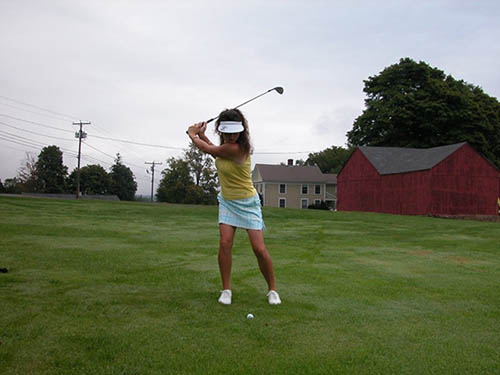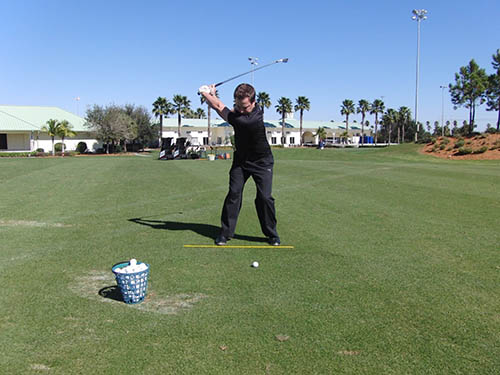There is a Turn in Every Coil, But Not a Coil in Every Turn

By Dr. T. J. Tomasi, Keiser University College of Golf Senior Faculty and Director of Research
Your muscles are like lazy houseguests who just lie around and do nothing until you force them to get moving. And nowhere is this propensity to be lazy more prevalent than when you lift the club to the top during your backswing without coiling correctly. The club only weighs a few ounces, so it’s easily lifted simply by using your arms – sans body coil. While it may look effortless, a good swing follows a basic principle of biomechanics; i.e., Coil Takes Effort – Effort In = Effort Out.
Feeling coil
The key to power and accuracy lies in a relationship where the shoulders stay perpendicular to your spine during your backswing. Biomechanically, the shoulders rotate with the spine, not separate from it. To better understand proper shoulder/spine rotation, do the following exercise:
Take your normal setup and then stand up straight. Now fully extend your arms so that the club shaft is parallel to the ground. Next, while keeping your feet flat on the ground, rotate your shoulders/spine and stop when your hands and shaft are over your toe line. You should feel your hips turn slightly in response to the pull of your shoulders. When you do this, you’ll be able to sense the tension in your back. That’s the beginning of coil. If you don’t feel the big, banded power muscles of your back stretching, you’re not coiling correctly. Remember: There is a turn in every coil but not a coil in every turn. If you turn everything, you coil nothing.
Why is this important? A good coil builds energy during the backswing and then releases it on the forward swing. When you ditch the proper shoulder coil and simply lift the club into position, you’ll suffer a power outage at impact.
In the first photo below, the coil ratio of shoulders-to hips is not what it should be due to too much arm lift and not enough shoulder/spine rotation. The second photo shows a solid coil, and you can see how much more torqued this pro looks.

Our model is cheating on her shoulder coil, and she will pay the price in loss of distance. The ball may go straight, but it will be short of the target. This student has very flexible shoulders and can get the club in a good position even though she isn’t fully coiled – note how her lead shoulder is under her chin, but her back is not fully turned to the target. Using the chin/lead shoulder as a marker for a proper coil can be misleading.

Note how this pro’s back is turned to the max, fully stretching the big power muscles of the upper back. A bigger shoulder/spine rotation translates into receiving the “true value” of the club’s distance; i.e., our model will get the distance planned for. Golf is a game where surprises are usually not good.
If you’d like to study with Dr. Tomasi and other PGA Master Professionals, contact The College of Golf today.















I am just starting to learn this after 30 years of golfing.Reborn golfer now.